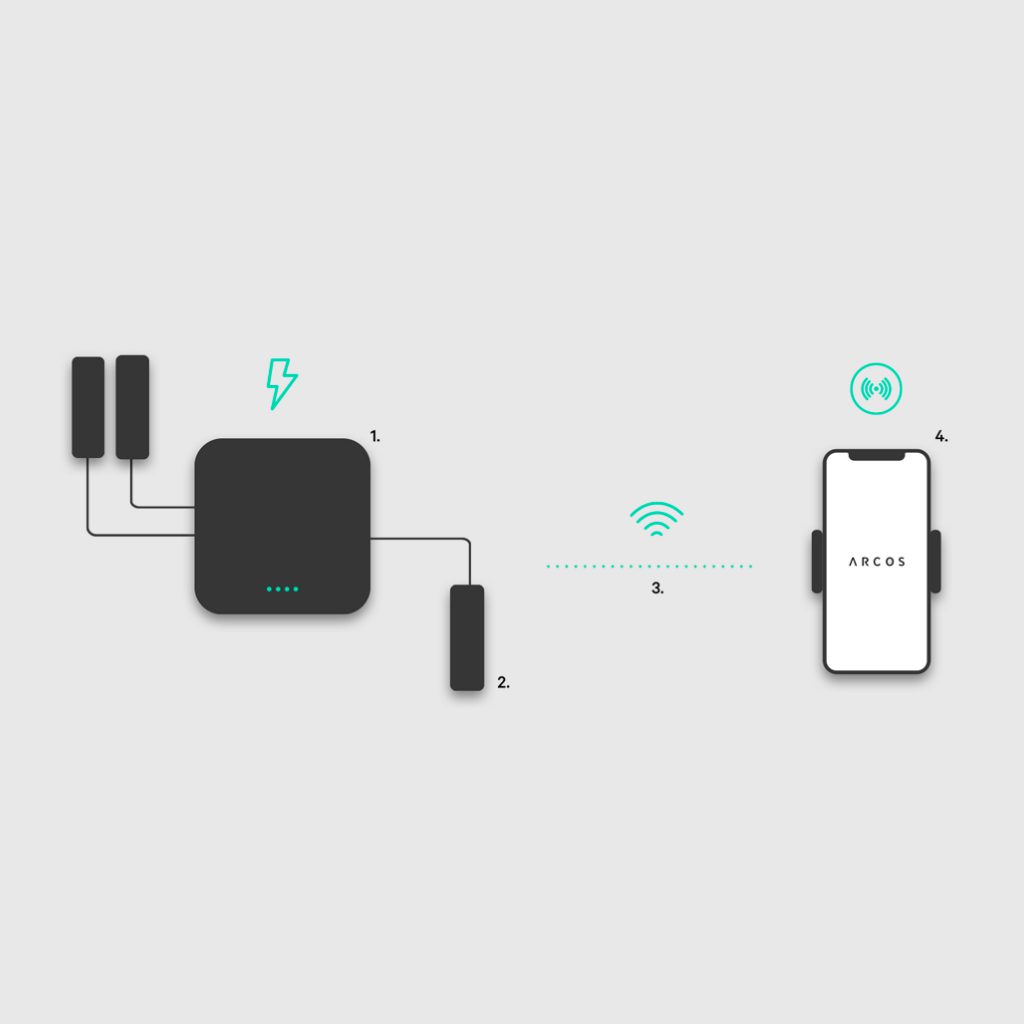ARCOS
Adaptive Intelligence for your Car
ARCOS is an adaptive driving assistant that transforms older car models into smart cars. By using tiny camera sensors and an AI-based smartphone app, the peripheral traffic can be tracked. In addition, the app’s machine learning software is continuously improved through the participatory involvement of the users. ARCOS mission is to make road traffic safer and thus decimate the number of road fatalities.

„Future mobility can definitely not be solved in a sustainable way by simply replacing existing cars with advanced technology vehicles. Besides, considering the amount of non-connected cars on the road, added safety assistance should be accessible to all traffic participants. This means reaching beyond those consumers privileged to afford the newest and most advanced features and tapping into solutions for existing automobiles. The jury acknowledges the complexities that this concept still needs to address to „make it real“ – however, the thinking, process, narrative and outcomes reveal a great approach towards new talent solving an existing problem for our future mobility strategies.“
– Layla Keramat ( UXDA Jury Member and General Manager / Executive Design Director, Spark Reply)
Urban road traffic fatalities in Germany 2018
Source: Statistisches Bundesamt (Destatis) 2019
00
Challenge
According to a statistic from the WHO, about 1.35 million people died in road traffic in 2018. A further 50 million people are injured in road traffic accidents, some of them for their lives. As the EU Commission has announced, 25,000 people lose their lives every year on the roads of the European Union alone.
Most of these accidents are due to human error: disregard for the right of way, turning or backing up without looking and excessive speed are the most common causes. Although passenger safety has been steadily increasing since the 1970s, other road users, such as pedestrians and cyclists, are still considered particularly vulnerable groups.

01
Research
The idea for the project was born during the class of Analytical Design in the second semester of the Strategic Design master program. The task was very openly formulated, but the aim was to find useful fields of application for Artificial Intelligence. Quickly we focused on assisted driving as our opportunity area.
Research was conducted on accidents, their causes and on different assistance systems. Various self-experiments and test drives were carried out to test different object recognition software available for smartphones. In this way we tested reaction times, recognition of different traffic participants and traffic signs. The results were altogether satisfying and proved our first ideas to be feasible.
02
Ideate
How might we provide cost-effective digital upgrades for older cars and contribute to increased road safety ?
After some brainstorming, we came up with the idea that small camera modules with magnets could be attached to the body of the vehicle and connected to the driver’s smartphone via Wlan. An app is installed on the smartphone, which uses a machine learning algorithm to cost-effectively combine functions such as lane departure warning, distance warning, parking assistance and traffic participant recognition.


03
Prototype
To check the feasibility we built several prototypes, which mainly consist of a small Full HD camera, a Wlan transmitter and a 3D printed housing. We connected these to the smartphone with real-time image transmission and attached them to the car at various positions. In this way we were able to determine how many camera modules [1] were needed to enable 360 degree tracking. To prevent permanent power supply and theft, it was necessary to connect the camera modules to a main module [1], which is located in the car and communicates with the smartphone [3,4].
04
Test
After developing a first app prototype, we wanted to verify our assumptions in a qualitative user test at the Fraunhofer IAO in Stuttgart. In addition to the digital prototype, we created a model to simulate a driving situation and scenarios in which we investigated the subject’s interaction with our digital application. We encouraged the test persons to think aloud. With the help of a test guideline that we created in advance, we were able to gain valuable insights and integrate them into the final app design. So we decided to make the design of the user interface primarily in portrait format and to make it as easy to capture as possible.


05
Implement
In the final version of the app there are two different modes. One is the driving mode, in which the user interacts with the smartphone as little as possible and is primarily warned by the app. On the other hand, there is the Review Mode, in which the driver can analyse his drives and retrospectively assess the situation. For this purpose, the driver is asked about various traffic situations and the machine learning algorithm learns continuously from these answers. The user is rewarded with credits and his monthly subscription fee is reduced. Whereas A one-off purchase fee is charged to obtain the Arcos Kit with the camera modules.





Team Members
Miriam Brüne
Andreas Kissling
Project Info
Summersemester 2019
Analytical Design | Prof. Benedikt Groß
Awards & Nominations
UX Design Awards 2020
Special Mention | International Design Center Berlin
Tools
Adobe XD | p5.js | Coco SSD | 3D Printing | Photoshop | Keyshot | Solid Works | After Effects | Premiere Pro |InDesign | Illustrator



